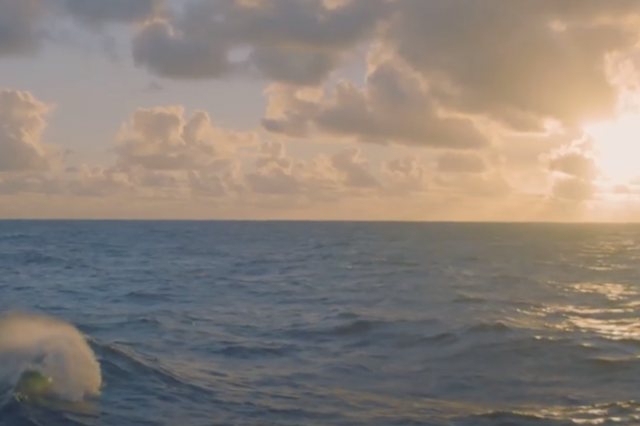In Hot Water
As the ocean temperature continues to rise, how are the Pacific’s flora and fauna faring, adapting— or not—and how can people help?
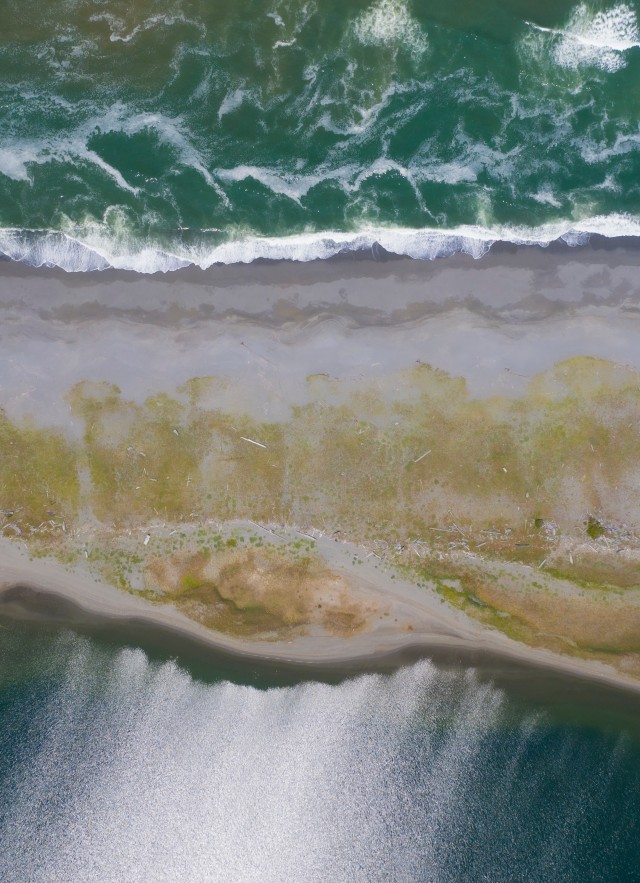
Underwater kelp forests wilt, and the food supply for sea urchins and crabs dries up. Yellow-bellied sea snakes float to SoCal shores on heated currents. Marine mammals succumb to toxic algae blooms.
The world’s oceans are heating up due to increasing greenhouse gases, changing their health and biochemistry, according to NASA.
In addition to that general warming trend, there are spikes in ocean temperatures that have brought rarely seen tropical sea creatures to L.A.’s shores. During the El Niño event in 2016, sea water that came from the Central Pacific (in spots, five degrees above normal) was warmer than had been recorded in at least 25 years. There were big fish, such as whale sharks, along with out-of-place snakes, whales, turtles, crabs. They could have been catching a ride with the current or venturing 1,000-plus miles north from their too-hot tropical habitats of Mexico and Central America in search of more hospitable waters and food.
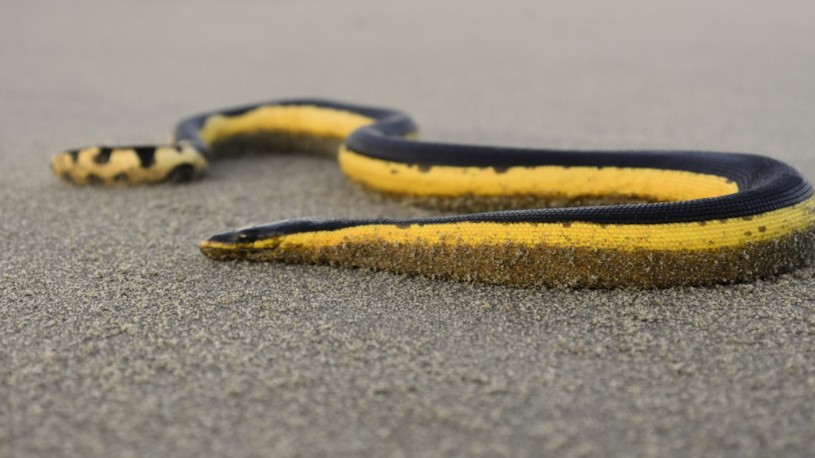
Aquatic arrivals to our portion of the Pacific in recent years have included two yellow-bellied sea snakes (see above) that had washed up on local beaches. Both were found farther north than any had ever previously been documented in the Eastern Pacific.
“It is incredible and fascinating to have two of these aquatic, highly venomous snakes suddenly show up around here,” Herpetology Curator Greg Pauly said at that time. Pauly has documented the unusual occurrence of the 2-foot-long venomous creatures which are now part of the more than 15 million marine specimens in NHM’s collections, animals that are fueling interest in the biodiversity of watery worlds.
During El Niño, there were unusual sightings of the ocean’s biggest inhabitants. Pilot whales were seen bounding around the local waters, and Bryde’s whales, a tropical species of baleen whale that doesn’t venture north of Mexico, have followed the sardines, crabs, and krill.
In non-El Niño years, marine mammals are increasingly facing danger from their heated surroundings.
“The main perils would be changing habitats (e.g., loss of sea ice), which would also affect their prey, thus altering predator-prey relationships or foraging behaviours,” Jorge Velez-Juarbe, NHM’s Associate Curator of Marine Mammals. “Another aspect would be increased seasonalities resulting in more intense continental freshwater discharge leading to sudden influx of nutrients into the oceans which tend to trigger toxic algal blooms (as we've seen more often in SoCal). These can be toxic and have detrimental effects on marine mammal communities, including sea lions, causing mass die-offs.
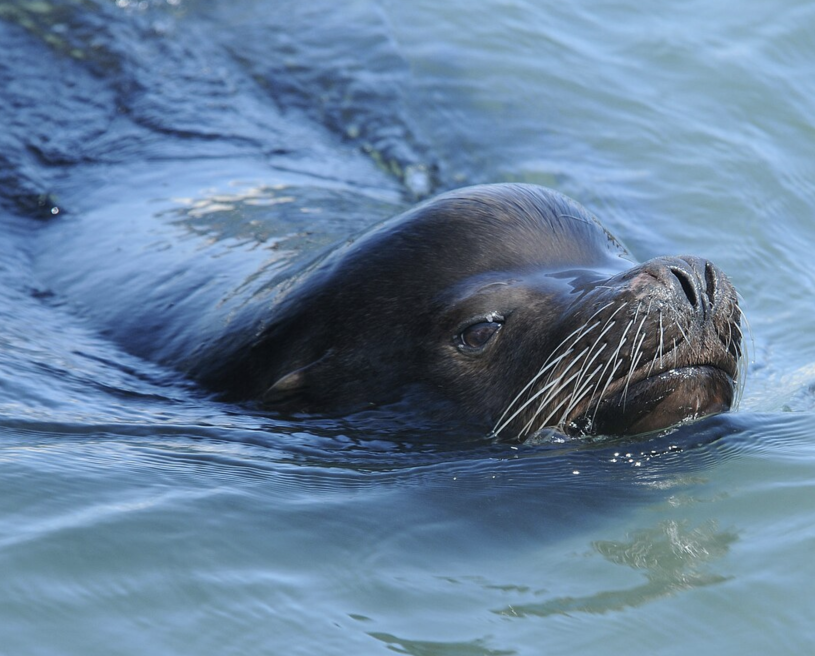
Then there are the fishes. According to one study, Unusual occurrences of fishes in the Southern California Current System during the warm water period of 2014–2018, “the highest sea-surface temperature ever recorded in a 103-year span of continuous data collection occurred in August 2018. During that period, shifts in the geographic range of hundreds of marine organisms were documented.
Whale sharks, the world’s largest living fish, for instance, turned up off of Catalina in 2016 during an El Niño event. Sports fishing enterprises reported a banner SoCal season with big catches of tunas, skipjack, and black and blue marlin, even more than in Baja. That year there were five oarfish strandings.
Looking over time, it's a complex picture as some fish far fare better than others as the oceans heat up. ”Some fishes actually increase in abundance, particularly further south along California, while others will decrease. Spawning time can be influenced in some species too, but not uniformly, so it appears many fishes are impacted differently,” says William B. Ludt, NHM’s Associate Curator of Ichthyology. “And some species that may favor or be predicted to do better in warmer years, don't always do so when we have warm water periods (a recent example is sardines). So overall, it's a bit complicated and not easy to predict how communities will adapt and change.”
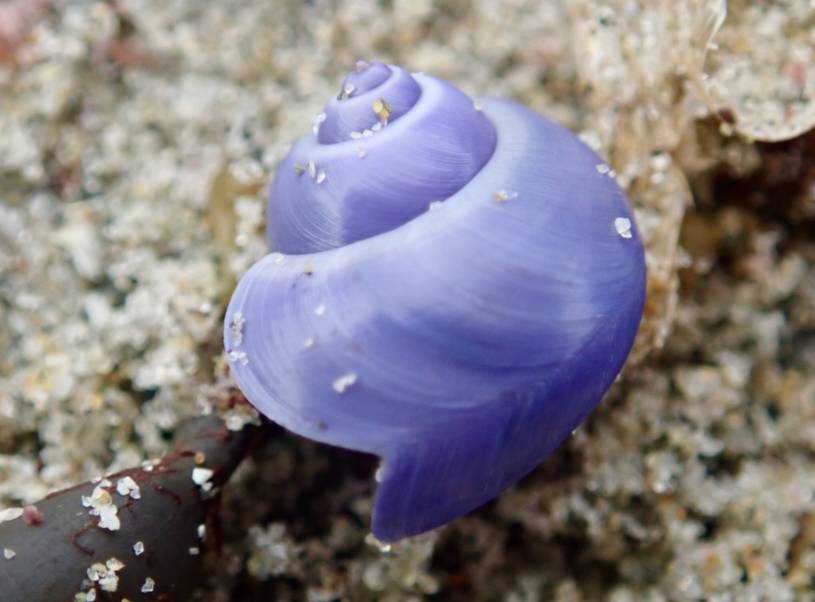
One group that could possibly be affected by this in the future is the elongated violet snail (Jainthina umblicata). The shells of many of these purple beauties—that never touches a hard surface and floats in the ocean its whole life—washed up on several SoCal beaches in July 2025.
There’s no evidence there was a warming event in the ocean that brought these here, said Jann Vendetti, Associate Curator of Malacology at NHM, referring to the many specimens of the species in the Malacology Collection. “They are going with the flow," she said. "But it might start becoming more common if we get warmer currents of water offshore."
As the sea temp rises, what is happening with the aquatic plants? It is clear that kelp—the fertile ecosystems that supply food and shelter for thousands of species such as marine mammals like sea lions to sea urchins and crabs—are threatened by temperature rises.
“Kelp forests could suffer massive losses by 2100 as ocean heatwaves intensify,” according to the UCLA institute of the Environment and Sustainability. “Marine heatwaves could become 16 times more frequent, with kelp forests in the Northern Hemisphere facing the most extreme losses,” according to their study.
Plumbing the depths using research as a scope to surface the effects of ocean temperatures on marine ecosystems is essential to understanding future trends. Scientists, in partnership with community scientists, are determined to dive into the murky waters for answers.

